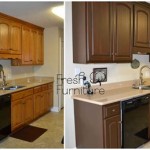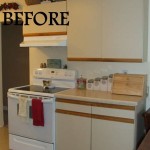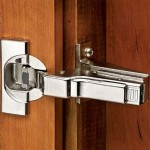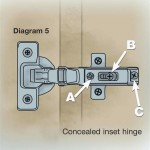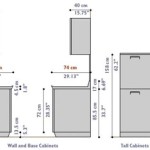How to Remove Mildew Smell from Kitchen Cabinets
Mildew, a type of mold that thrives in damp environments, can leave an unpleasant musty odor in your kitchen cabinets. Not only is this smell undesirable, but it can also be a sign of underlying moisture problems that need to be addressed. Here's a comprehensive guide to help you effectively remove mildew smell from your kitchen cabinets, ensuring a fresh and healthy indoor environment.
Identify and Address the Source of Moisture
Before attempting to remove the mildew smell, it's crucial to identify and eliminate the source of moisture that's causing the problem. Check for leaks around sinks, faucets, and pipes. Inspect the cabinet interiors for any signs of water damage or condensation. Ensure your kitchen is well-ventilated by using exhaust fans and opening windows when cooking or showering. If the moisture issue persists, consider using a dehumidifier to control humidity levels.
Clean and Disinfect Cabinet Interiors
Once the moisture source is addressed, it's time to clean and disinfect the cabinet interiors. Remove all contents from the cabinets. Prepare a solution of one part white vinegar to two parts water in a spray bottle. Spray the vinegar solution onto all surfaces of the cabinets, including shelves, drawers, and hardware. Allow the solution to sit for 15-20 minutes, then wipe down all surfaces with a clean cloth.
Neutralize Odors with Baking Soda
Baking soda is an effective odor neutralizer. Place open boxes of baking soda inside the cabinets and leave them there for several days or even weeks. The baking soda will absorb the mildew smell and freshen the air. Alternatively, you can sprinkle baking soda on the cabinet shelves and drawers and vacuum it up after a few hours.
Use Activated Charcoal
Activated charcoal has excellent odor absorption properties. Fill small containers or mesh bags with activated charcoal and place them inside the cabinets. Leave them for a few days to absorb the musty smell. Replace the charcoal regularly to maintain effectiveness.
Ventilate and Deodorize
After cleaning and neutralizing odors, it's important to ventilate the cabinets and deodorize them. Open the cabinet doors and windows for as long as possible to allow fresh air to circulate. Place bowls of white vinegar or bowls containing coffee grounds inside the cabinets to further absorb odors.
Prevent Future Mildew Growth
To prevent mildew from recurring, it's essential to maintain proper ventilation and humidity levels in your kitchen. Use exhaust fans and open windows when cooking or showering. Regularly inspect your cabinets for any signs of moisture or damage. Consider using moisture-resistant cabinets or shelf liners to minimize water absorption.

Musty Smell In Kitchen Cabinets Cupboards Causes Solutions

Musty Smell In Kitchen Cabinets Cupboards Causes Solutions

How To Remove Mold In Kitchen 100 Doable The Insider

Getting Rid Of The Musty Old Smell From Your Cabinets N Hance Wood Refinishing Franklin Murfreesboro

How To Get Rid Of A Mildew Smell Under Sink Dishwasher Hunker Kitchen House Cleaning Tips

How To Clean A Moldy Smell Under Kitchen Sink Ehow

How To Clean Mold In Kitchen Cabinets Servicemaster Re

Help With Odor In Kitchen Cabinets Hometalk

Kitchen Mold Mildew Where It Hides What You Can Do

Get Funky Musty Smells Out Of Your Cabinets With A Few Items You Already Own
Related Posts


